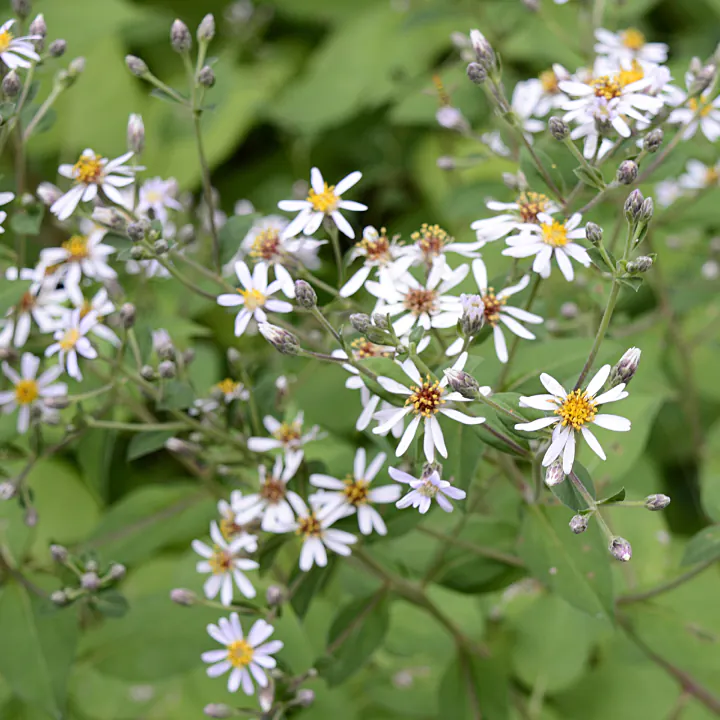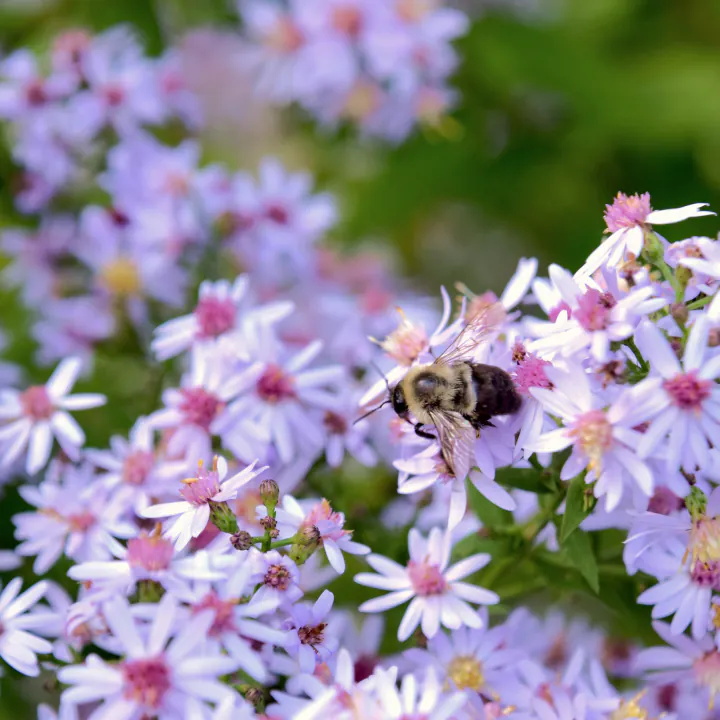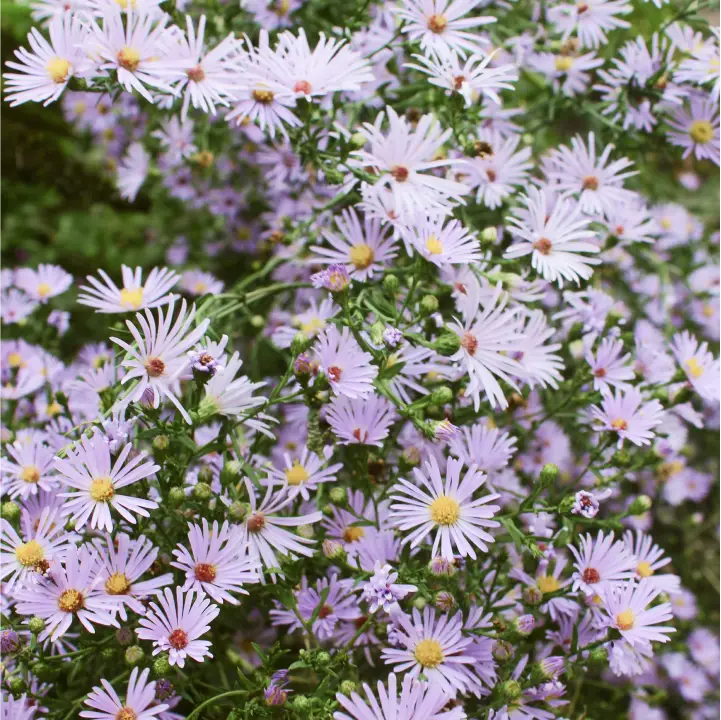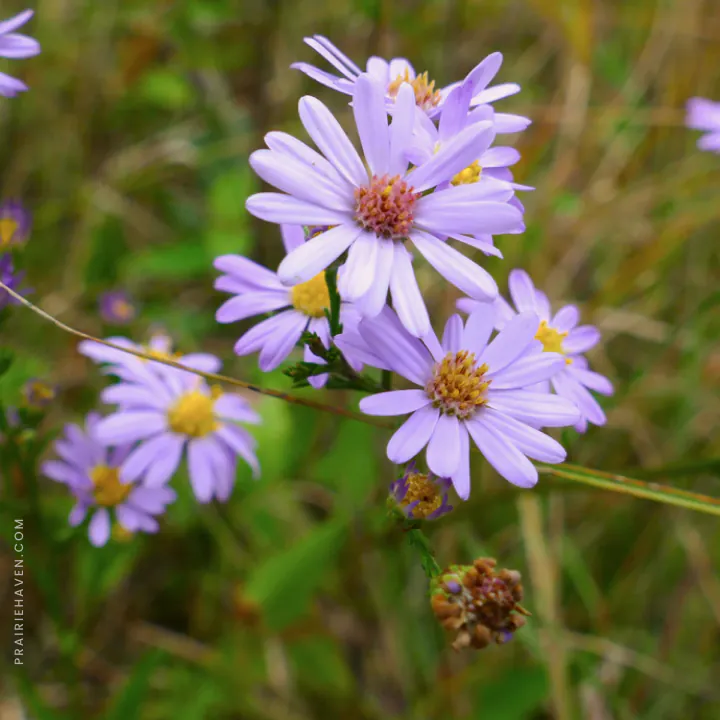As the days grow shorter and summer begins to wane, your garden can still shine brightly with the addition of stunning asters. These native plants not only bring vibrant color to your landscape but also play a crucial role in supporting local wildlife.
Here are five asters that will make a beautiful and beneficial addition to your garden.
1. Calico Aster (Symphyotrichum lateriflorum)
Calico asters bloom from late summer into early fall (August-October), offering a burst of color with their star-like flowers in shades of white to purple. Symbolizing love, wisdom, and purity, they are a favorite among pollinators, serving as host plants for butterflies and moths. Drought-tolerant and low maintenance, they add an airy quality to garden borders and meadows, thriving in a wide native range across North America from Ontario to Arkansas.
Calico Aster
Symphyotrichum lateriflorum (Aster lateriflorus)
The numerous flowers of Calico Aster (Symphyotrichum lateriflorum (Aster lateriflorus)) will attract butterflies and other pollinators to your garden.
2. Bigleaf Aster (Eurybia macrophylla)
Bigleaf asters bloom from late summer to early fall (September-October), attracting bees and butterflies with their pale lavender to white flowers. Thriving in partial to full shade, these low-maintenance and versatile plants provide late-season nectar and cover for small wildlife. Ideal for woodland gardens and shaded borders, they can tolerate a variety of soil conditions (including sand) and can even be planted in full sun. Growing only 1-2 feet tall, bigleaf asters are a good choice to add some ground cover and dimension to your garden.
Bigleaf Aster
Eurybia macrophylla (Aster macrophyllus)
Bigleaf Aster (Eurybia macrophylla (Aster macrophyllus)) will provide a welcoming environment to butterflies, bees, and other pollinators and wildlife.
3. Blue Wood Aster (Symphyotrichum cordifolium)
Blue wood aster, also known as heart-leaved aster, blooms from late summer to fall (June-November), attracting bees, butterflies, and other pollinators with small, pale blue to lavender flowers. Adaptable to various soil types and low maintenance, they thrive in partial shade and can tolerate full sun or full shade, making them an attractive groundcover ideal for woodland gardens.
Blue Wood Aster
Symphyotrichum cordifolium (Aster cordifolius)
With heart-shaped leaves, Blue Wood Aster (Symphyotrichum cordifolium (Aster cordifolius)) is an attractive groundcover that blooms in early fall.
4. Smooth Blue Aster (Symphyotrichum laeve)
Smooth blue aster is a hardy plant with profuse lavender-blue flowers, blooming late into the fall (August-October). The leaves are smooth to the touch which makes this species different from most asters. The beautiful late-blooming flowers attract many different pollinators and it is a host plant for silvery checkerspot and pearl crescent butterflies. Drought-tolerant and low maintenance, they thrive in full sun and well-drained soils, ideal for sunny borders, prairie plantings, and meadow gardens.
Smooth Blue Aster
Symphyotrichum laeve (Aster laevis)
Smooth Blue Aster (Symphyotrichum laeve (Aster laevis)) is a hardy plant with smooth leaves and profuse lavender-blue flowers, blooming late into the fall.
5. Sky-blue Aster (Symphyotrichum oolentangiense)
Sky-blue asters bloom from late summer to fall (September-November), attracting bees, butterflies, and beneficial insects with their stunning sky-blue flowers. Thriving in medium-to-dry soil and full-sun to part-shade light conditions, these asters are east to grow and perfect for prairie plantings, meadow gardens, and sunny borders.
Sky-blue Aster
Symphyotrichum oolentangiense
Sky-blue Aster (Symphyotrichum oolentangiense) is a hardy plant with profuse lavender-blue flowers, blooming late into the fall.
Creating a Vibrant Fall Garden with Asters
Adding any of these five asters to your garden not only enhances its beauty but also supports local wildlife and promotes biodiversity. These low-maintenance, resilient plants provide crucial resources for pollinators and other beneficial insects, making your garden a haven for wildlife. Embrace the elegance and ecological benefits of calico aster, bigleaf aster, blue wood aster, smooth blue aster, and sky-blue aster to create a vibrant, wildlife-friendly garden that thrives throughout the fall season. Visit the Garden for Wildlife online store to find these and other native plants perfect for your garden.






